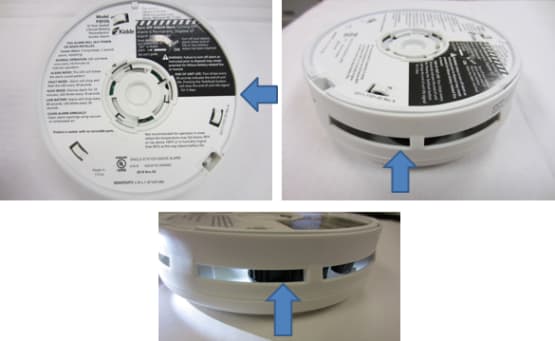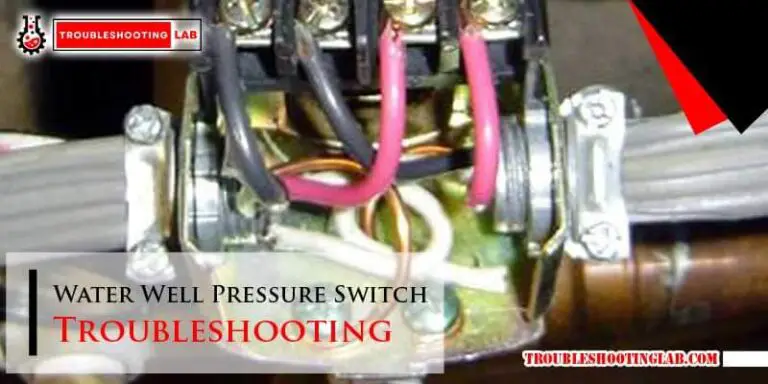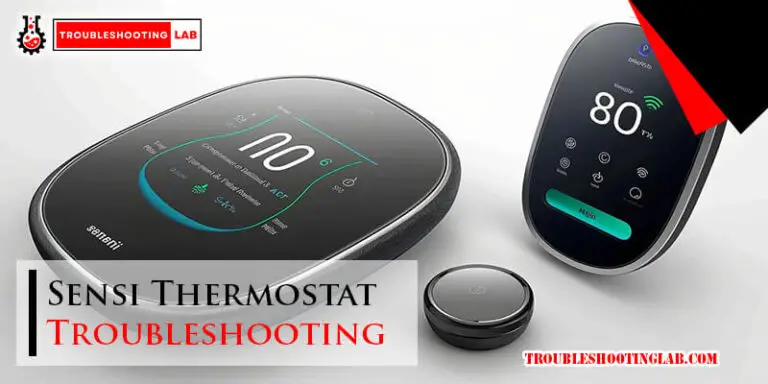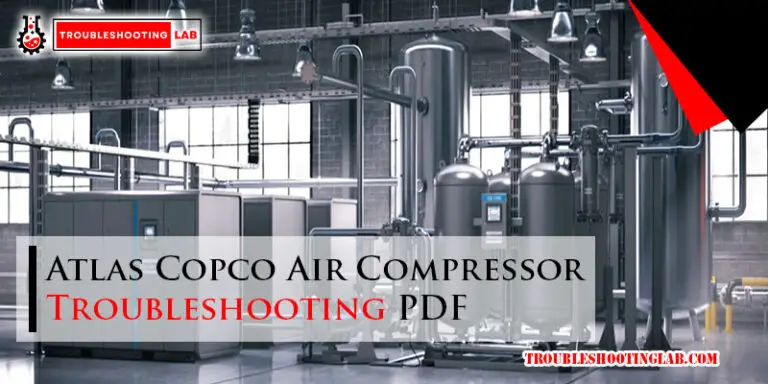Miele Vacuum Troubleshooting Problems: Solve Them Easily
If you are experiencing issues with your Miele vacuum cleaner, such as power failure, low suction, or brushes not spinning, there are several troubleshooting steps you can follow to resolve the problem. Some common causes of these issues include a blocked filter, an overfilled bag, or a clog in the hose.
By cleaning or replacing these parts, you can often restore your vacuum cleaner’s functionality. Seek professional help if needed. Remember to always double-check the battery for cordless models.

Common Issues With Miele Vacuum Cleaners
If you own a Miele vacuum cleaner, you know that it is a reliable and powerful cleaning tool. However, like any other appliance, Miele vacuums can encounter some common issues that may affect their performance. In this section, we will discuss some of these problems and provide troubleshooting tips to help you resolve them.
Low Suction Due To User Error
One of the most common issues Miele vacuum owners face is low suction. Surprisingly, this problem is usually caused by user error rather than a fault with the vacuum itself. The powerful suction of Miele vacuums can often mislead users into thinking that they can safely pick up large objects or debris. However, this can lead to clogs and reduce the suction power of the vacuum.
To troubleshoot this issue, first check if the vacuum bag is correctly installed. Improper installation can restrict airflow and result in low suction. Ensure that the bag is securely attached and is not overfilled. Additionally, check the vacuum hose and attachments for any clogs or obstructions. Clearing these blockages should restore the vacuum’s suction power.
Miele vacuum cleaners are equipped with overheating protection mechanisms to ensure safe operation. If the vacuum’s air passage becomes blocked, such as when vacuuming bulky particles, the motor will automatically shut off to prevent overheating and potential damage to the appliance.
If you find that your Miele vacuum keeps stopping, it is likely due to this overheating protection feature. To troubleshoot, first check for any blockages in the hose, attachment, or brush roll. Remove any obstructions and allow the vacuum to cool down before turning it back on. Additionally, ensure that you are not overworking the vacuum by vacuuming for extended periods without breaks.
Problems With Brush Roll Spinning
The brush roll of a Miele vacuum is responsible for agitating the carpet and loosening dirt and debris for effective cleaning. If you notice that the brush roll is not spinning, it can diminish the cleaning performance of the vacuum.
To troubleshoot this problem, first check if the brush roll is clogged with hair or other debris. Use scissors or a brush to remove any tangled material. Additionally, check the brush roll’s belt for any signs of damage or looseness. If the belt is worn out or broken, it may need to be replaced. Refer to the user manual or contact Miele customer support for guidance on replacing the brush roll belt.
Clogged Vacuum And Step-by-step Troubleshooting
A clogged vacuum can significantly impact its performance. If you notice a decrease in suction power or unusual noises coming from your Miele vacuum, it may indicate a blockage.
To troubleshoot a clogged vacuum, follow these step-by-step instructions:
- Turn off the vacuum and unplug it from the power source.
- Check the vacuum hose for any visible blockages, and remove them using a long, flexible brush or coat hanger.
- Inspect the attachments and remove any debris or hair that might be obstructing airflow.
- Remove the vacuum bag or empty the dust canister and clean it thoroughly.
- Check the air filter and clean or replace it if necessary.
- Reassemble the vacuum and plug it back in.
- Test the suction to ensure that the clog has been eliminated.
By following these troubleshooting steps, you should be able to resolve the most common issues with your Miele vacuum cleaner and restore its optimal performance.
Troubleshooting Low Suction
User Error And Inappropriate Bag Installation
One of the main causes of low suction in a Miele vacuum can be attributed to user error or an inappropriate bag installation. These vacuums are known for their powerful suction capabilities, which can sometimes lead users to underestimate the importance of proper bag installation. If the bag is not installed correctly, it can hinder the airflow and result in reduced suction power.
To troubleshoot this problem, ensure that the bag is securely fastened and properly seated in its designated compartment. Double-check the bag’s alignment by referring to the user manual or following the instructional videos provided by Miele. This simple solution can make a significant difference in restoring maximum suction power to your Miele vacuum.
Clearing Clogs And Obstructions
Another common cause of low suction in a Miele vacuum is the presence of clogs or obstructions within the machine. The powerful suction of these vacuums can sometimes lead users to mistakenly believe that they can vacuum up larger objects, such as pens, hairpins, or other bulky items. These objects can become lodged in the hose, wand, or brush roll, restricting the airflow and causing reduced suction power.
To address this issue, thoroughly inspect the hose, wand, and brush roll for any signs of clogs or obstructions. Remove any debris or blockages carefully, ensuring no damage to the vacuum’s delicate components. You can use long, flexible, tools such as a pipe cleaner or a wire coat hanger to gently dislodge any stuck debris. By clearing these clogs and obstructions, you can restore the optimal suction power of your Miele vacuum.
Ensuring Proper Maintenance And Cleaning
Another crucial aspect of troubleshooting low suction in a Miele vacuum is ensuring proper maintenance and cleaning. Over time, dirt, dust, and debris can accumulate within the vacuum’s filters, brush rolls, and other components, leading to reduced airflow and suction power.
To maintain peak performance, regularly clean and maintain your Miele vacuum by following these steps:
- Regularly replace the vacuum bag to prevent it from becoming overfilled and obstructing airflow. Refer to the user manual or Miele’s official website to purchase the appropriate replacement bags for your specific model.
- Clean or replace the filters as recommended by the manufacturer. Miele vacuums typically have different types of filters, such as the pre-motor filter, exhaust filter, and HEPA filter. Follow the instructions in the user manual to properly clean or replace these filters.
- Inspect and remove any accumulated debris or tangles from the brush roll. This component can often get tangled with hair, thread, or other fibers, causing it to lose its effectiveness. Use scissors or a brush to carefully remove any tangled material, taking care not to damage the brush roll.
By adhering to these maintenance practices, you can ensure that your Miele vacuum functions optimally, delivering powerful suction and effectively cleaning your floors and carpets.
Overheating Protection And Automatic Shut-off
When it comes to the performance and durability of your Miele vacuum cleaner, one of the important features to be aware of is its overheating protection and automatic shut-off mechanism. These safety features not only help to extend the lifespan of your vacuum cleaner, but they also ensure your safety while using the appliance.
How The Temperature Limiter Works
The temperature limiter is a vital component in Miele stick vacuum cleaners that protects against overheating. This feature is designed to monitor the temperature of the motor during operation. If the motor starts to overheat due to extended use or other factors, the temperature limiter kicks in to prevent any damage to the vacuum cleaner.
When the temperature limiter detects that the motor is reaching a critical temperature, it activates an automatic shut-off mechanism. This causes the motor to shut off completely, giving it a chance to cool down and prevent any potential damage.
Air Passage Blockage And Motor Shut-off
If the air passage of your Miele vacuum cleaner becomes blocked, whether due to large debris or other obstructions, the motor will automatically shut off for safety reasons. This ensures that the motor does not continue to operate under increased stress and potentially lead to overheating or damage to the appliance.
If you encounter low suction or notice that the motor is shutting off frequently, it is important to check for any blockages in the air passage. Clearing any obstructions will not only restore the suction power of your vacuum cleaner but also prevent the motor from overheating and prolong its lifespan.
Ensuring Safety And Preventing Overheating
To ensure your safety and prevent overheating issues in your Miele vacuum cleaner, there are a few simple steps you can follow:
- Regularly check and clean the filters of your vacuum cleaner. Clogged filters can restrict airflow and lead to overheating.
- Avoid vacuuming up bulky particles that may cause blockages in the air passage.
- Ensure that the dust bag is properly installed and not overfilled, as this can also restrict airflow and lead to overheating.
- Check and clean the brush roll regularly, as tangled hair or debris can affect the performance of the vacuum cleaner.
By taking these preventative measures, you can maintain the performance of your Miele vacuum cleaner and avoid any potential overheating issues that could disrupt your cleaning routine.
Resolving Brush Roll Spinning Problems
When it comes to vacuuming, a properly functioning brush roll is essential for effective cleaning. However, if you’re experiencing issues with the brush roll not spinning on your Miele vacuum, it can be frustrating. In this section, we will discuss how to identify and address common problems related to the brush roll, including the clear brush roll not spinning and the TASH roll not spinning. By following these troubleshooting steps, you’ll be able to get your Miele vacuum back to peak performance in no time.
Identifying And Addressing Issues With Brush Roll
If you notice that the brush roll on your Miele vacuum is not spinning, there could be several reasons behind this problem. Before diving into troubleshooting specific issues, it’s essential to perform a quick inspection to identify any visible obstructions or damage. Here are some steps you can take:
- Check for any tangled hair, threads, or debris wrapped around the brush roll.
- Inspect the brush roll for any signs of wear or damage. If the bristles are worn or frayed, it may be time to replace the brush roll.
- Ensure that the brush roll is properly aligned and securely attached to the vacuum.
By following these steps, you can rule out any simple obstructions or issues with the brush roll itself. If the brush roll appears to be in good condition, it’s time to address the specific problems you may be facing.
Troubleshooting Clear Brush Roll Not Spinning
If you have a Miele vacuum with a clear brush roll, and it’s not spinning as it should, here are some troubleshooting steps to resolve the issue:
- Check the suction power of the vacuum. A weak suction can prevent the brush roll from spinning correctly. Ensure that the bag or dust container is not full and that there are no clogs in the air pathway.
- If the suction power is adequate, inspect the belt that drives the brush roll. Over time, belts can become stretched or worn, resulting in a loss of tension and preventing the brush roll from spinning. Replace the belt if necessary.
- Make sure that the brush roll switch is in the “ON” position. Sometimes, users accidentally switch off the brush roll, leading to spinning issues.
By following these steps, you should be able to resolve the problem of a clear brush roll not spinning on your Miele vacuum.
Troubleshooting Tash Roll Not Spinning
If you have a Miele vacuum with a TASH roll and it’s not spinning, the following troubleshooting steps can help you address the issue:
- Inspect the TASH roll for any obstructions. Hair, threads, or other debris can get tangled in the TASH roll, causing it to stop spinning. Carefully remove any obstructions you find.
- Check if the TASH roll switch is in the correct position. Ensure that it is turned “ON” to enable the spinning action.
- If the TASH roll is still not spinning, there may be an issue with the motor or electrical connection. In such cases, it’s recommended to contact a Miele-authorized service technician for further assistance.
By following these troubleshooting steps, you’ll be able to address common problems related to the brush roll on your Miele vacuum. Remember to always refer to the user manual provided by Miele or seek professional help if needed. With a properly functioning brush roll, your Miele vacuum will deliver exceptional cleaning performance.
Step-by-step Troubleshooting For Clogged Vacuum
Dealing with a clogged vacuum can be frustrating, but don’t worry! With our step-by-step troubleshooting guide, you’ll be able to identify the signs of a clogged vacuum, clear the clogs in different parts of the vacuum, and prevent future clogging issues. Let’s get started!
Identifying Signs Of A Clogged Vacuum
It’s important to know the tell-tale signs of a clogged vacuum, so you can address the issue promptly. Here are some signs to look out for:
- Weak suction or no suction at all
- Unusual noises coming from the vacuum cleaner
- Debris or dust spitting back out of the vacuum
- The brush roll not spinning
If you notice any of these signs, chances are you have a clogged vacuum. The next step is to locate and clear the blockage.
Clearing Clogs In Different Parts Of The Vacuum
A clog can occur in various parts of your Miele vacuum, including the hose, wand, attachments, and filters. Here’s how you can clear the clogs:
Hose:
- Detach the hose from the vacuum cleaner.
- Check for any visible blockages.
- Use a long, flexible brush or a coat hanger to remove the debris.
- Reattach the hose and test the suction.
Wand and attachments:
- Remove the wand and attachments from the vacuum.
- Inspect each piece for clogs and remove any debris.
- Clean the attachments thoroughly using warm, soapy water.
- Dry the attachments before reattaching them to the vacuum.
Filters:
- Locate the filters in your Miele vacuum.
- Remove the filters and tap them gently to remove any dust or debris.
- If the filters are washable, rinse them under running water and let them air dry completely.
- Insert the filters back into the vacuum.
By following these steps, you should be able to clear the clogs and restore the suction power of your Miele vacuum.
Preventing Future Clogging Issues
To minimize the chances of dealing with a clogged vacuum in the future, here are some preventive measures you can take:
- Empty the dust bag or canister regularly to prevent debris from accumulating.
- Inspect and clean the brushes and beater bars regularly.
- Avoid vacuuming up large items that can cause blockages.
- Check the filters regularly and replace them when necessary.
- Store your vacuum in a clean and dry area.
By following these preventive measures, you can ensure that your Miele vacuum stays clog-free and performs at its best for years to come.
There you have it – a step-by-step troubleshooting guide for dealing with a clogged vacuum. By identifying the signs, clearing the clogs, and taking preventive measures, you can keep your Miele vacuum in top-notch condition and enjoy efficient cleaning every time. Happy vacuuming!
Frequently Asked Questions
Where Is The Reset Button On A Miele Vacuum?
The reset button on a Miele vacuum can be found near the power button. It is usually a small, round button that you can press to reset the vacuum if it is not functioning properly.
Why Does My Miele Vacuum Cleaner Keep Stopping?
Your Miele vacuum cleaner may keep stopping because of a blocked air passage. When the motor senses a blockage, it automatically shuts off for safety. Check for bulky particles that may be causing the blockage. Make sure to clean or replace the bag to prevent low suction.
Seek professional help if needed.
Why Has My Miele Vacuum Lost Suction?
Low suction on Miele vacuums is usually due to user error, like an improperly installed bag or a clog caused by trying to vacuum up large objects. Make sure the bag is installed correctly and check for any blockages in the hose.
What Is The Common Malfunction Of Vacuum Cleaner?
The most common malfunctions of a vacuum cleaner include low suction force, excessive noise, burning smell, failure to turn on, and overheating. These issues can usually be resolved by cleaning the device or replacing certain parts. In some cases, it may be best to seek professional assistance.
How Do I Troubleshoot My Miele Vacuum’s Power Issues?
If your Miele vacuum isn’t turning on or has low power, first check the power outlet and cord for any faults. If they’re working fine, it might be a problem with the motor or power button.
Conclusion
To troubleshoot problems with your Miele vacuum cleaner, it’s important to identify common issues such as low suction, motor failure, or clogged filters. By understanding the causes behind these problems, you can effectively troubleshoot and fix your vacuum. Remember to check for a blockage in the hose, ensure the bag is not overfilled, and clean or replace filters regularly.
Seeking professional help may be necessary for more complex issues. With proper maintenance and troubleshooting, you can keep your Miele vacuum performing at its best and ensure a clean and healthy home.






